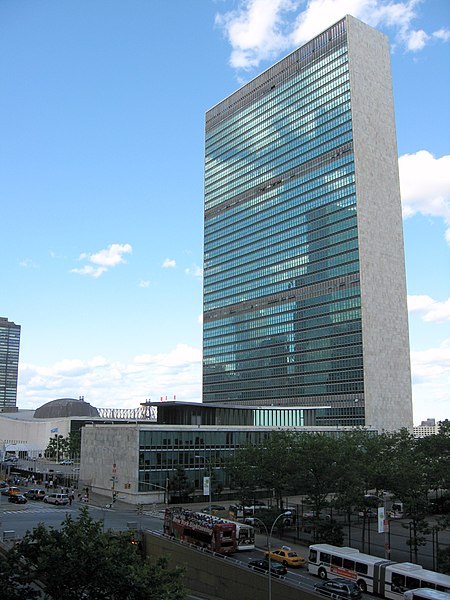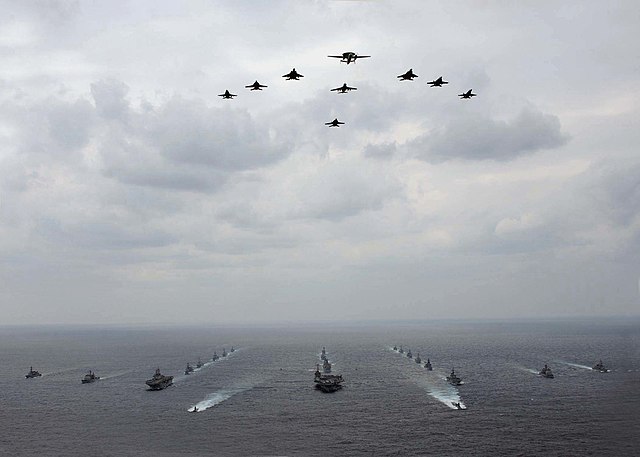Headquarters denotes the location where most, if not all, of the important functions of an organization are coordinated. In the United States, the corporate headquarters represents the entity at the center or the top of a corporation taking full responsibility for managing all business activities. In the United Kingdom, the term head office is most commonly used for the headquarters of large corporations. The intended benefit of headquarters is to carry out purposeful regulatory capacity. The term is also used regarding military organizations.
The headquarters of the United Nations in New York City.
Fortum headquarters building, Espoo, Finland
Volvo headquarters building, Gothenburg, Sweden
Staff officers (Commander Cross, left, Captain Lake, right) discuss convoy movements in the Operations Room at HQ Western Approaches Command, Derby House, Liverpool, September 1944
Military organization (AE) or military organisation (BE) is the structuring of the armed forces of a state so as to offer such military capability as a national defense policy may require. Formal military organization tends to use hierarchical forms.
A mixed aircraft and ship formation of military vehicles during an exercise with USN and JASDF vehicles.





